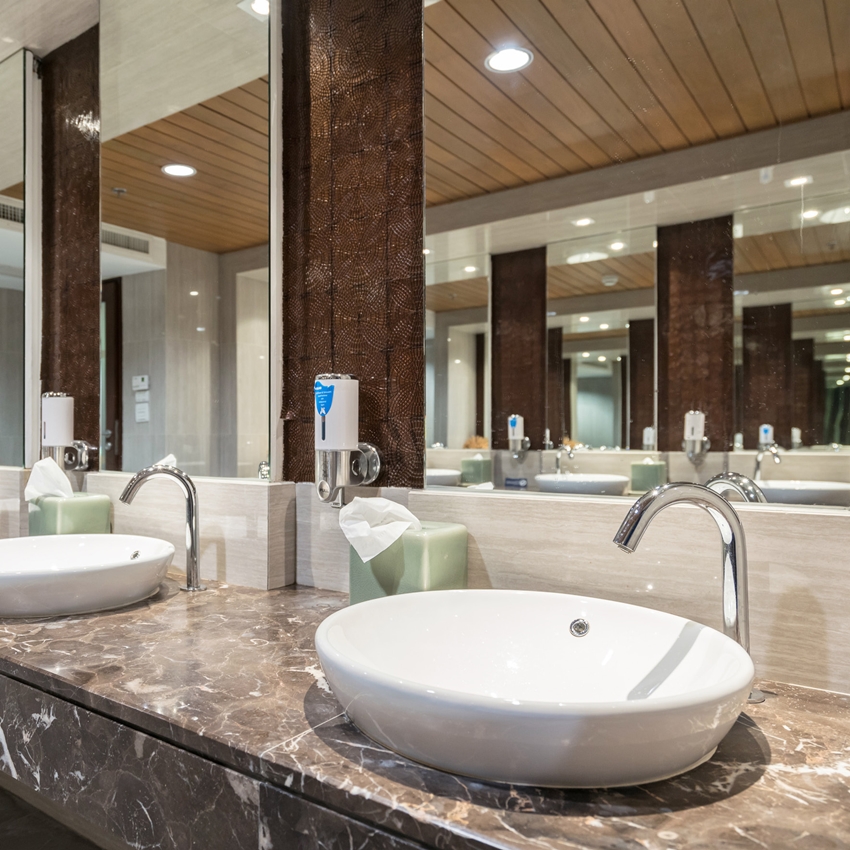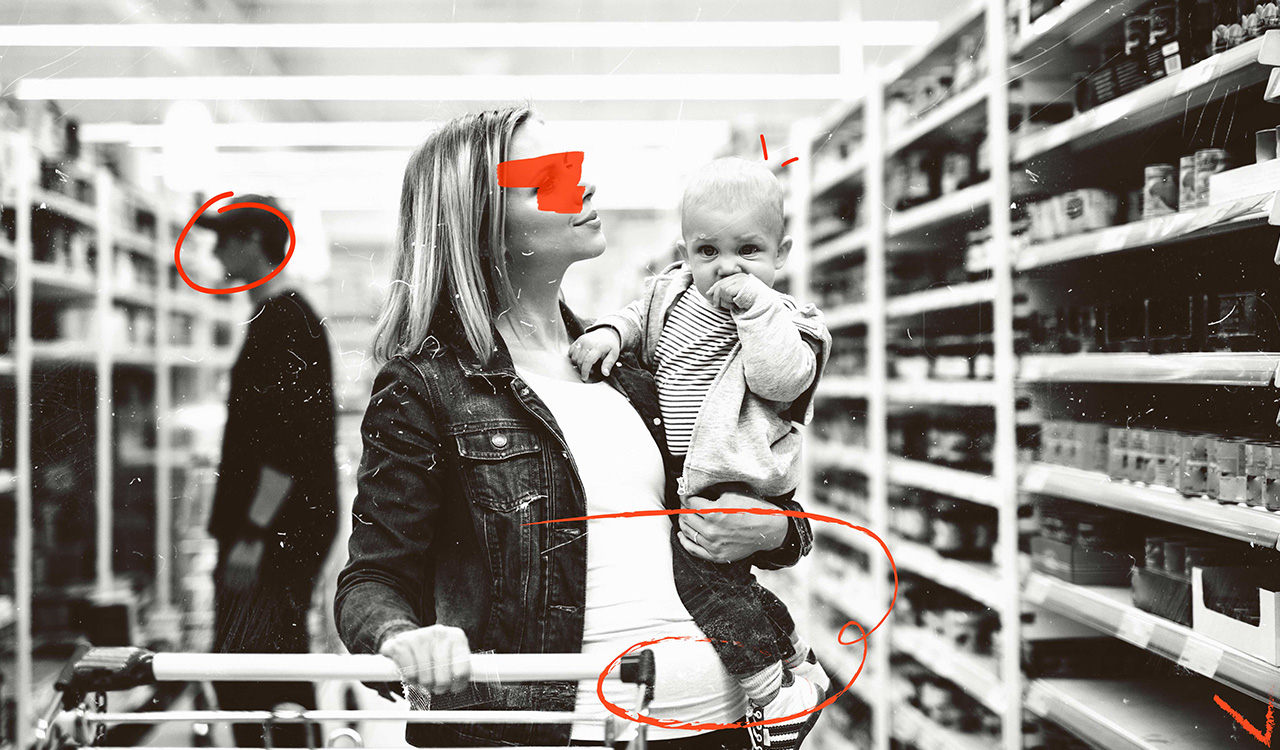Over my career, I’ve worked with a lot of clients that had hidden opportunities to market their products and services, hidden in plain sight. These opportunities come as a surprise to the retail executives I consulted with, and I have noticed that there are still so many ways to deliver meaningful experience to customers that seem elusive to even the most sophisticated and experienced executives. So, I offer some of these observations as food for thought.
Anatomy Lessons + Design
In 1977 I published my first article on public design in a small architectural journal. The piece was called “Viva La Difference,” and it was about the crisis in women’s bathrooms. Now, 48 years later the crisis continues.
In the world of 21st century marketing, wait zones are easy places to capture attention. So, the essential question is “What do you do while you’re waiting?” For a marketer, it’s a golden opportunity to pitch and capture attention.
Here is the basic fact: Women’s bladders are smaller than men’s. Simply stated, they have to go more often – plus, because of female anatomy, how they dress and their beauty routines, women spend more time in a restroom than men. They also require more space. Based on our calculations at Envirosell, it would take 1.75 times the floor space to provide the same number of toilet positions for women to do their business as it does men. Yet when you look at most architectural drawings, the scale of the men’s and women’s bathrooms is often the same. The consequences? From Lincoln Center’s Metropolitan Opera (which inspired my first article) and Broadway theaters to airports and the Mall of America on a busy Saturday, there are always lines at the ladies’ room.
The bigger issue is, why do most women put up with it? My girlfriend in college was a tall, broad-shouldered lady with attitude. I never saw her wait in line. She had a habit of barging into men’s rooms and scooting into an empty stall before anyone noticed her presence. She was bold and uniquely courageous.
Another issue is that there aren’t enough ladies’ rooms in public places – particularly retail stores. So, less space and fewer locations can lead to some unhappy and frustrated female customers.
Another bathroom crisis I heard about was at the East Wing of The National Gallery in Washington. It was the last public restroom stop on any march to the Capital (an accidental convenience that I. M. Pei apparently didn’t consider in his prize-winning design). Little known fact: At almost all the ERA marches of the late 70s and 80s, the men’s rooms at the National Gallery were commandeered by the march’s marshals and turned in ladies’ rooms. The male marchers, and museum visitors were directed to use the men’s rooms at the Department of Justice building across the street.
Targeted Marketing
Ten years ago, we did a study on Americans’ movie-going experiences. We documented the percentage of women headed to the restroom after the movie, and the presence of males hanging outside the ladies’ room waiting for their dates.
That triggered the very simple proposition that guys waiting for their dates would look at anything you displayed. The average wait time was two+ minutes and on camera we documented the guys looking both at their phones, but also the posters on the wall. Our advice was dynamic signage timing the messaging to vary the advertising content. In the world of 21st century marketing, wait zones are easy places to capture attention. In a movie theater minute by minute throughout the day you know the nature of the audience based on start and end times. So, the essential question is “What do you do while you’re waiting?” For a marketer, it’s a golden opportunity to pitch and capture attention.
Nontraditional Marketing Opportunity
Last month, I walked through a new prototype home center store with a distinguished group of the chain’s design and marketing staff. They were proud of their store. For the men in the group their cumulative experience at the chain was well above one hundred years. I asked to see their ladies’ room. None of the men had ever been inside any of their ladies’ rooms, much less the one at their prototype.
The restroom was a plain jane rectangle; all-white, with bright fluorescent lights. It could have been in a Sam’s, Kmart, or any one of the facilities at the Garden State Plaza Mall. In other words, it had no retail identity. While most retailers recognize their responsibility to provide a positive restroom experience, management is not thinking outside the box.
I asked the home center executives as we stood in the ladies’ room, what percentage of female customers coming through their front door use of the restroom. They guessed between 15 and 25 percent. My next question was how important was it to navigate their customers through as much of the store as possible. They agreed that particularly at a home center, as much touchpoint exposure to merchandise was an important part of building sales. They also felt strongly that they wanted to encourage shoppers, particularly women, to visit as many parts of the store as they could with each store visit.
My third and last question was what was going on, on the other side the wall that the ladies room shared with the rest of the store. The answer was the plumbing and bathroom design center. I stated that perhaps if they doubled the size of the ladies’ room, they could turn it over to Kohler and American Standard as functioning showroom.
There would be drop-dead vanities, beautiful sinks, granite bidets, flattering lighting – the works. They could up the count to 95 percent of the women walking through the door to visit the bathroom way in the back of their store. It could become a destination to showcase state-of-the art bathroom design and an effective marketing platform for their suppliers. I thought they’d sell more products and build a more personal relationship with their female customers. And great bathrooms generate female word-of-mouth buzz.
I don’t know whether they ever took my advice, but as I was scrambling through O’Hare on a recent evening and passed a line at one of the ladies’ rooms, I wondered what if these restrooms were turned over to America’s bathroom fixture industry as showcases and sampling stations for the beauty industry.
Hidden in Plain Sight
There are so many missed opportunities to cross-market and use space and places as novel marketing platforms. The idea that you can turn retail or public facility costs into opportunities needs a review. For example, transforming commercial parking lots to pop-ups and food truck centers, made possible by additional wiring and plumbing. Using the kitchen section of the store to merchandise a fully realized, immersive environment. Or sampling beauty products in a beautifully designed ladies’ room can engineer trials as the critical step to getting to a sale.
Good Idea, Poor Execution
Pirch, the luxury kitchen/bathroom experiential store that was a retail darling 10 years ago believed that to sell expensive shower heads was based on trial, and therefore invited customers to bring a bathing suit to try it out. Their concept was to fully immerse customers in environments that inspired multiple purchases. The idea was great, but the operation failed because they didn’t understand that high-end customers have personal designers to curate their bathrooms and kitchens. RH is offering a similar immersive experience to inspire customers to update their home furnishings, with greater success.
So, back to our restroom research, the point is that retailers already have spaces that can be repurposed or retooled to offer supplier partnerships to sell products contextually. Think like your customers think and market to them in experiential environments when they’re thinking of actually using your products.




